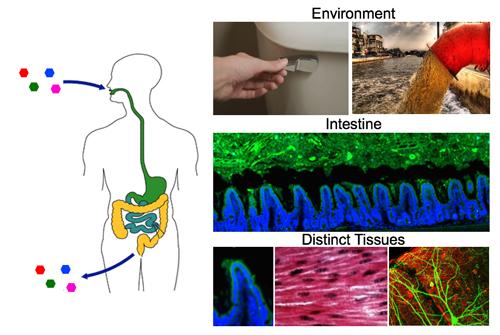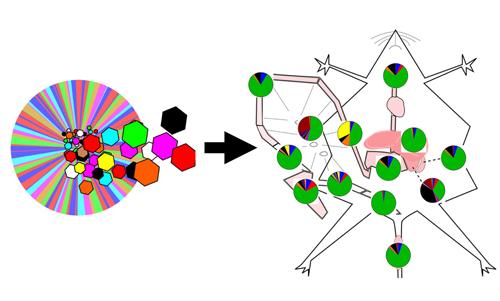Viruses encounter several environments and niches as they travel within and between hosts. For example, enteric viruses are exposed to the external environment, digestive enzymes, and intestinal microbes before they initiate replication in the gut. Some enteric viruses can disseminate to the central nervous system through blood or neural routes. How do these different environments influence viral replication, evolution, pathogenesis, and transmission? What barriers limit viral dissemination? Our lab uses tractable model viruses such as poliovirus, coxsackievirus B3, reovirus, and murine norovirus to learn about niche-specific factors that influence viral infection and evolution.
RNA viruses exist as populations of genetically diverse viruses with varying levels of fitness. Viral genetic diversity is generated through error-prone RNA replication. Mutations can have several consequences: most are deleterious, some are neutral, and a few may be beneficial. We have a variety of projects related to viral evolution, including how unique environments shape viral populations and drive emergence of unique variants, how co-infection influences viral evolution and fitness, and how the complex intestinal environment affects enteric virus evolution and transmission.

